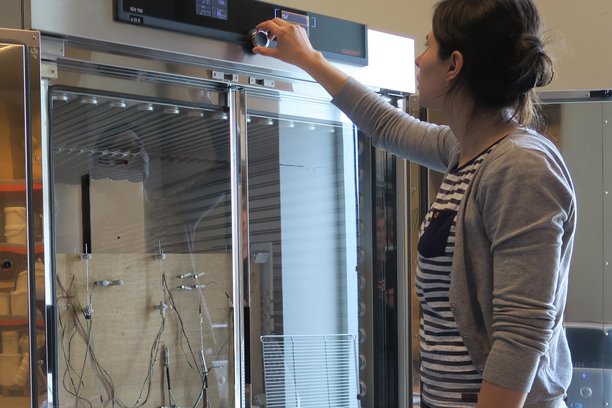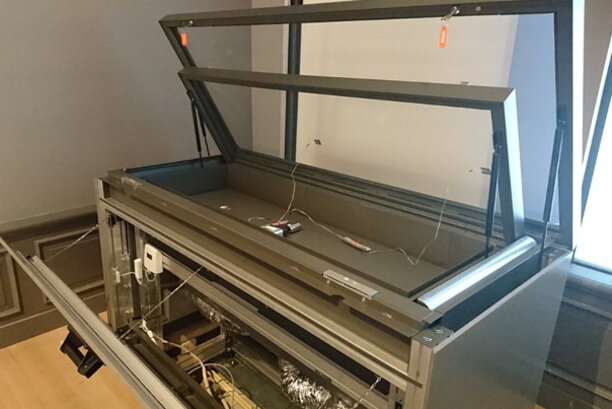The science behind a museum visit
When visiting a museum, you donāt immediately think about all the work being done behind the scenes. A world of decay, fading colors, bended canvases and even cracked paint. Tackling these problems involves a lot of science. Because even though some paintings have been around for centuries, research into the ageing process of art works is still in its infancy.
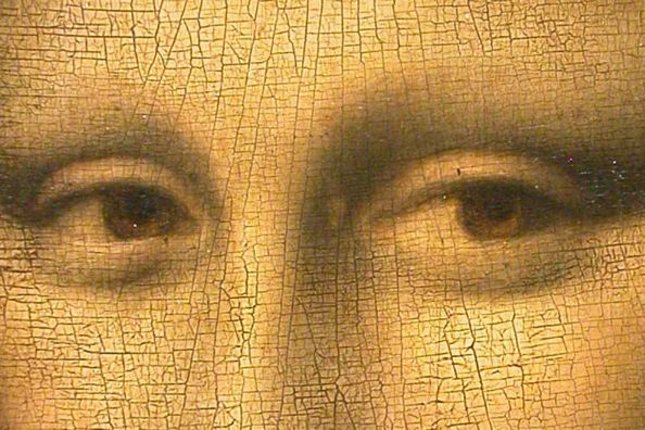
Perhaps the best-known example of damage to a painting is Leonardo da Vinci's world-famous Mona Lisa. We know this lady with cracks in her skin, an effect known as ācraquelure.ā Even though this painting technique is now sometimes imitated on purpose, it obviously never was the artistās intention. Unfortunately, 70% of oil paintings in museums worldwide are damaged in this way.
Climate threat
Our cultural heritage is by now facing a new threat. Climate change increases the frequency of heavy rainfalls, extreme heat and long droughts. These extreme weather conditions are a threat to our monuments, statues and sculptures outside. But indoor objects, such as paintings in museums, are exposed to these conditions as well. The indoor environment of museums needs to remain as constant as possible, and humidity has a devastating effect on these delicate objects. As a result, climate control systems that regulate the air quality have to work harder and harder to keep the conditions constant. And this in a time when sustainability features more prominently on the agenda, which means that the use of energy needs to be scaled down.
Itās therefore important to gain insight into the effects of climate change on our art objects, so that we can prevent or reduce the potential risk that our cultural heritage will suffer damage, or that it will be irretrievably lost.
Several research groups at Eindhoven University of Technology are working to preserve our heritage, often in collaboration with major museums in the Netherlands. They use everything at their disposal to combat the metal soaps, moisture, salt and changes in temperature that cause damage to our paintings. Click on the topic you would like to learn more about. Or continue scrolling down to read about all the topics successively.
Metal soaps, lumps that grow from inside
Cracks in historical oil paintings can be caused by a chemical process in the paint. The pigments in the paint contain metals such as lead and zinc, which can react to fatty acids that are degraded from the oil binder. This leads to the formation of so-called metal soaps. Professor Akke Suiker and assistant professor Emanuela Bosco of the department of the Built Environment investigate the chemo-mechanical processes that occur in oil paintings. Bosco received in 2017 a prestigious Veni grant from NWO for this type of research.
Suiker: āThe metal soaps occupy more space than the paint itself, which leads to compressive stresses in the metal soap and tensile stresses around it. Metal soaps manifest as small, growing lumps in the paint. They eventually appear on the paintingās surface, causing the paint to crack in certain locations.ā The exact composition of the paint ā all the great masters made their own paint ā determines the seriousness of this effect. āWhen we understand that process, weāll hopefully be able to slow down or even prevent the formation of metal soaps in the future,ā Suiker says. Suiker and Bosco, in collaboration with PhD candidate Gijs Eumelen and researchers from the University of Amsterdam, developed a model that can predict when formation of metal soaps will occur, how they will develop, and whether they will cause the paint to crack in certain places.
Moisture, the silent killer
Paintings donāt just face threats from within. An artworkās environment has a significant influence as well. Moisture in particular causes serious damage. Suiker: āWhen a painting releases moisture, it shrinks. This results in stresses that can lead to cracks and ruptures. The paint can peel away from the substrate because of this, it almost jumps off so to speak. This process is called spallation, as a consequence of the delamination.ā Bosco and Suiker in collaboration with professor Norman Fleck of Cambridge University, who received an honorary doctorate from TU Eindhoven in 2014. For this, they determined the material properties that a layer of paint in a historical painting needs to have in order to prevent delamination from occurring. They also investigated what humidity level museums should set to prevent delamination of historical paint layers as much as possible.
Layer of paint stops moisture
But research into humidity goes even further than that. Because humidity can ā unfortunately ā cause a painting to bend in its entirety, or even tear completely. Sixteenth century wood panel paintings are particularly sensitive to this. They served as religious objects in churches at the time and were painted on wood, because canvas didnāt exist in those days. The vulnerability lies in the layer of paint on the wood.
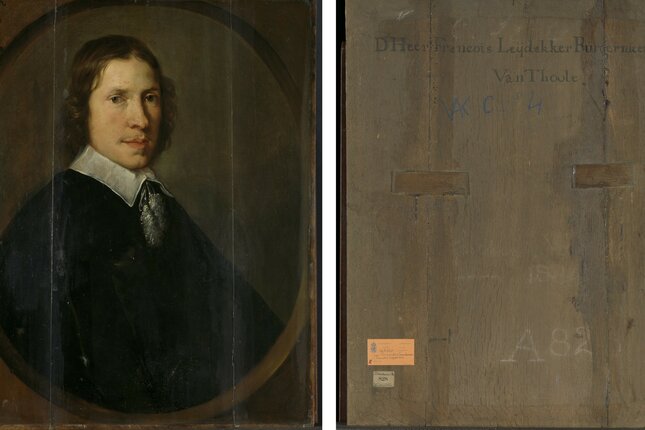
Leo Pel of the department of Applied Physics wanted to predict up to what level moisture can vary without causing a threat to a panel painting. That is why former doctoral candidate Thomas Arends developed a mathematical model during his doctoral research at the departments of Applied Physics and Mechanical Engineering, that predicts how the panels bend exactly at certain fluctuations in the level of moisture.
One of the things Arends used for his experiments was a 134-year-old oak door that was on display in the original Rijksmuseum. He used an MRI scanner to look at how the moisture spread throughout the wood. āThat allowed us to show that the moisture spreads unevenly throughout the wood,ā Arends says. āThe layer of paint closes the wood off from moisture on one side, so to speak. As a result, the moisture enters on the back of the wood, causing the painting to bend.ā
Ageing, old wood breaks fast
Seventeenth century wooden cabinet doors are very sensitive to moisture as well. They are made of several wooden planks that were glued together, and often nailed or glued together with a crossbar. Wood expands in the direction perpendicular to the wood grain, and the crossbar limits that process. This gluing or nailing of the crossbar makes the tensile stresses increase even further. For her doctoral project at ¹ū¶³“«Ć½ās Built Environment department, former postdoc Rianne Luimes wanted to investigate how that tearing works mechanically in the cabinet doors of the Rijksmusuem collection. Her research was part of the NWO Climate4Wood project and was carried out in collaboration with the Rijksmuseum.
Luimes discovered that older wood is less strong than young wood. āA wooden cabinet door ages over a period of several centuries and will therefore be less resistant to fluctuations in humidity,ā Luimes says.
Salt, stone dissolves in front of your eyes
Besides moisture and metal soaps, salt too has a devastating effect on art objects. In fact: salt presents the greatest danger to porous material. Think of statues, pots and vases in museums. But also think of mural paintings in churches and castles. Even entire buildings run the risk of suffering irreparable damage.
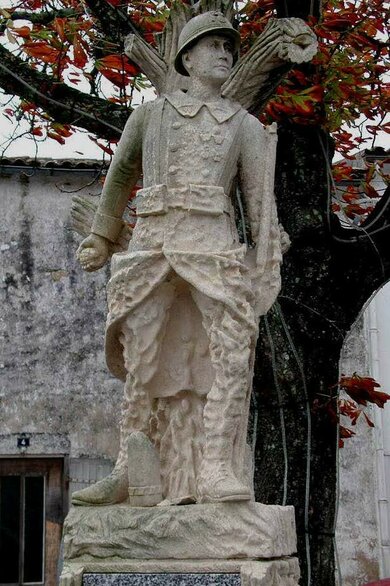
Vacationers in southern Europe will often come across churches or statues with a unique honeycomb structure. Thatās a typical example of salt weathering. Limestone in particular is very sensitive to salt.
Researcher Leo Pel of the department of Applied Physics looks at the crystallization pressure induced by salt. He investigates the mechanical damage that occurs as a result, and tries to find solutions to this problem.
Crystallization
Salt seeps into a material as a solution and finds its way to the pores of the art object. Pel: āAs soon as the temperature increases or the humidity level decreases, the salt crystalizes into a solid substance. When there are significant fluctuations in the humidity level, the salt will dissolve over and over and crystalize again. The salt crystals grow, and as a result the pressure on the material increases.ā This can happen on the surface and will be visible there as white powder, for example on a mural painting. It can also happen within the material, in which case it will wait like a silent killer until the pressure increases to such an extent that the material breaks. This is why the latter form is the most dangerous one.
The effects of salt on art objects made of a single material have been extensively researched in recent years. Tiles and frescos however are made of several layers of different materials. How salt behaves between these layers is not known. That is why Pel will soon start a new study into layered objects, in collaboration with the Rijksmuseum and researchers at the universities from Amsterdam, Bologna (Italy) and Pau (France).
Climate system, airbox with stable temperature
Understanding how moisture, metal soaps and salt can damage paintings and art objects is extremely important. But a short-term solution is to make sure that these evildoers canāt even get near a painting. That is why climate systems try to keep the air around paintings in museums as constant as possible. These systems limit the temperature and humidity fluctuations in the entire museum.
Pew heating protects valuable frescos
Researcher Henk Schellen of the department of the Built Environment has been studying these kinds of systems his entire career. āThe problems usually arise when a historic building needs to be heated. A church, for example, will suddenly get radiant heating that will release many liters of water, resulting in condensation on the walls and damage to frescos. The installation of floor heating on the other hand, leads to enormous air movements, and this will cause the historical mural paintings on the dome to turn black in the course of time because of the soot from the candles.ā
When this happens, people turn to Schellen for the best solution. In many cases, the answer is an air treatment installation, which regulates both the air temperature and the relative humidity, instead of the existing hot-air heating. Pew heating is also a good alternative for heating the entire church.
Schellen has by now with measurement data covering many years from all kinds of churches and museums in Europe. This allows him and the researchers from his group to continuously develop improved models for the buildings. āThanks to this, our recommendations are becoming more and more accurate,ā Schellen says.
In the project, he investigated the influence of climate change on climate systems, which need to work harder and harder to keep the conditions constant, while energy use should actually be reduced in order to make buildings more sustainable. In addition, Schellen and former doctoral candidate Zara Huijbregts linked long-term weather predictions to simulation models for historic buildings.
āThis allows me to predict the indoor climate of museums and historical buildings more accurately, and for example make recommendations for the climate system of a museum in 2050 at this point already,ā Schellens says.
More information:
Interested in our art research?
Are you motivated to protect our heritage, just like Leo Pel, Henk Schellen and Akke Suiker? Do you want to make sure that future generations will still be able to enjoy paintings and other art objects thanks to your research? See what TU Eindhoven has to offer in the fields of education, research and collaboration with museums.
